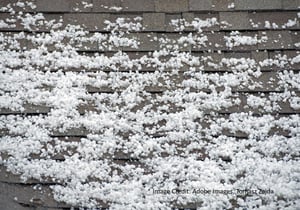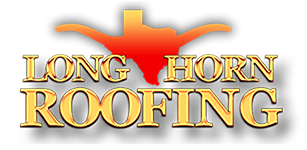The weather is getting colder, and we’ve been talking about hail on the Longhorn Roofing blog.
Previous posts covered how to inspect your roof for hail damage and the different forms of hail damage to shingles, especially on older roofs.
Now, we’re continuing with a common question:
“How does a roofer tell the difference between hail damage to shingles and pre-existing damage?”
This is crucial, since insurance companies will do everything possible to reduce the amount of money they provide for your claim. Luckily, there’s no mystery: Compared to roof damage caused by age,  hail damage to shingles is very distinctive.
hail damage to shingles is very distinctive.
Age-Related Roof Damage Discovered After Hailstorms
While inspecting for hail damage to shingles, a roofer might notice certain signs of wear and tear on your roof. The level of pre-existing damage on the roof can subtract from its value as insurance claims are filed.
These symptoms are age-related, not genuine hail damage to shingles:
1. Buckling Shingles
Buckling shingles are most commonly a sign of “layering over.” This is a discredited old-fashioned roofing practice that involves placing new layers of shingles over damaged older ones. We now know this tends to weaken roofs, so it discloses past roof work that may have been done poorly.
2. Water Spots on Ceiling
Discolored spots on the ceiling are the first sign of a roof leak. After any major rain or hailstorm, you should check the ceiling for these spots. They will appear long before water actually breaks through into the room, and if you are able to see them it unfortunately means that moisture damage is already occurring.
3. Curling Shingles
Shingle curling points to a variety of problems, but none of them are hail-related. Curling can be created by a failure to fasten the shingle with enough roofing nails. Curling over a long period of time suggests the attic needs new insulation, as heat can “bake” the shingle from below.
4. Rotting
Rotting of structural elements begins once shingles have been saturated to the core by moisture.
5. Blistering
Blisters – which resemble “bubbles” just under the shingle’s granule layer – are caused by moisture that gets trapped inside a shingle. Eventually, the shingle will break open, becoming weak and discolored.
Missing shingles, missing granules, and damaged flashing can all be age- or hail-related. To ensure you have all the information you need to go forward with a roof repair, schedule your roof inspection with Longhorn Roofing today.


